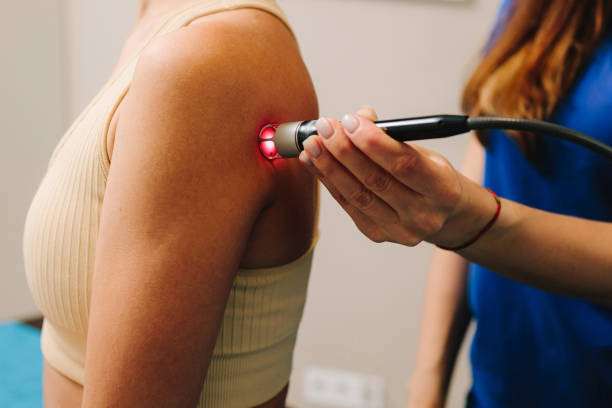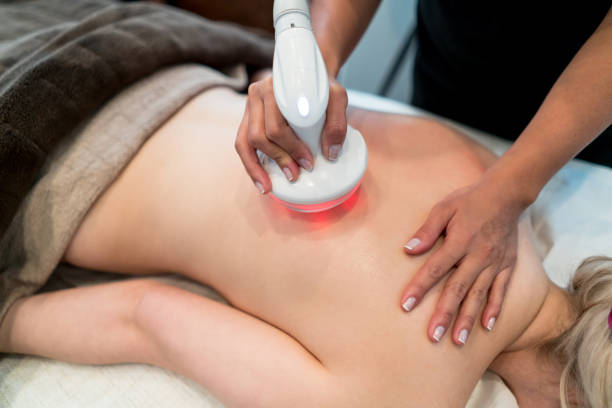Inflammation is a common response to injury, infection, or stress. While the initial phase of inflammation is known to facilitate healing, the protracted presence of inflammatory stimuli can result in deleterious sequelae, including arthritis, tendonitis, and autoimmune disorders. Red light therapy, a non-invasive treatment, has emerged as a popular modality for addressing pain and inflammation, with studies demonstrating its efficacy in promoting healing at the cellular level.
This article will explore the mechanisms by which red light therapy supports the immune system, reduces inflammation, and aids in conditions such as tendonitis and bruising.
The Best Therapy to Reduce Inflammation

Red light therapy, also known as photobiomodulation, involves exposing the body to low levels of red or near-infrared light. Unlike ultraviolet light, which can damage the skin, red and near-infrared light penetrates the skin without causing harm, reaching tissues beneath the surface. This therapy has been studied for its potential to promote healing, reduce inflammation, and alleviate pain.
Several treatments can help manage inflammation, including:
- Medications – NSAIDs (e.g., ibuprofen) and corticosteroids reduce inflammation but may have side effects.
- Cold therapy (Cryotherapy) – Helps temporarily reduce swelling and numb pain.
- Physical therapy – Beneficial for improving mobility and reducing stiffness.
- Anti-inflammatory diet – Foods rich in omega-3s, turmeric, and antioxidants help combat inflammation naturally.
- Red Light Therapy – A non-invasive solution that reduces inflammation at the cellular level without side effects.
Among these, red light therapy for pain relief is one of the best options as it works at a deep level to stimulate healing, improve blood flow, and balance the immune system.
How Red Light Therapy Reduces Inflammation

Boosts Cellular Energy (ATP Production)
At the cellular level, red and near-infrared light are absorbed by the mitochondria—the powerhouse of the cell-stimulating the production of adenosine triphosphate (ATP), the body’s primary energy source.
This increase in ATP provides cells with the energy needed for repair and regeneration, helping to reduce inflammation and accelerate healing. This mechanism plays a crucial role in conditions like tendonitis, where enhanced cellular repair can alleviate pain and improve function.
Supports the Immune System
Red light therapy helps regulate immune function by balancing the body’s inflammatory response. It reduces the production of pro-inflammatory cytokines while boosting anti-inflammatory cytokines, helping to manage chronic inflammation.
This balance is particularly beneficial for conditions involving an overactive immune response, such as autoimmune diseases, or an underactive immune system, which can lead to recurrent infections.
Improves Circulation and Oxygenation
Exposure to red and near-infrared light stimulates the release of nitric oxide, a molecule that relaxes blood vessels and enhances blood flow. Improved circulation ensures that oxygen and essential nutrients are efficiently delivered to tissues, accelerating healing processes.
Additionally, increased blood flow aids in flushing out metabolic waste products that contribute to inflammation and pain.
Reduces Oxidative Stress
Oxidative stress is characterised by an imbalance between free radicals and antioxidants within the body, resulting in tissue damage and inflammation. Red light therapy has been shown to enhance the activity of antioxidant enzymes, such as superoxide dismutase, which are key in neutralising free radicals.
By reducing oxidative stress, RLT has the potential to decrease inflammation and enhance cellular health.
Enhances Collagen Production
Collagen is a vital protein that provides structure to the skin, tendons and ligaments. Research has demonstrated that red light therapy can stimulate collagen production, which is vital for tissue repair and inflammation reduction.
Higher collagen levels have been demonstrated to enhance joint health, improve skin elasticity, and accelerate injury recovery, rendering RLT a particularly effective treatment for conditions such as tendonitis and bruising.
Applications of Red Light Therapy

Red Light Therapy for Tendonitis
Tendonitis is the inflammation of tendons, often resulting from repetitive strain or acute injury. Traditional treatments include rest, anti-inflammatory medications, and physical therapy. Red light therapy offers a complementary approach:
- Reducing Pain and Inflammation
By modulating inflammatory pathways and enhancing cellular repair mechanisms, RLT can alleviate pain associated with tendonitis.
- Accelerating Healing
Enhanced collagen production and improved circulation promote faster recovery of damaged tendons.
Clinical studies have demonstrated that red light therapy can be an effective treatment modality for tendinopathy, with evidence supporting its utility as both a standalone and adjunctive therapy.
Red Light Therapy for Pain ManagementChronic pain, a condition characterised by ongoing discomfort or distress, affects millions worldwide, often resulting in a diminished quality of life. The analgesic properties of red light therapy have been a subject of exploration.
Mechanism of Pain Reduction
The underlying mechanism of RLT in reducing pain involves several potential mechanisms, including the following:
The clinical evidence supporting the use of RLT in managing pain is encouraging, with studies suggesting its effectiveness in various types of pain, particularly those associated with inflammation, such as arthritis and joint disorders.
Red Light Therapy for Immune System SupportA robust immune system is paramount for averting infections and modulating inflammation. Red light therapy contributes to immune health by:
- Modulating Immune Responses
Balancing pro-inflammatory and anti-inflammatory cytokines ensures an appropriate immune reaction without excessive inflammation
- Enhanced Cellular Repair
Improved mitochondrial function and ATP production support the maintenance and repair of immune cells, thereby bolstering the body’s defence mechanisms.
The most effective LED light for the treatment of contusions
Contusions result from the rupture of blood vessels beneath the skin, leading to discolouration and tenderness. Red light therapy has been demonstrated to accelerate the healing process:
Mechanism
The underlying mechanism of red light therapy (RLT) in promoting bruise healing involves enhancing circulation and accelerating cellular repair. This, in turn, facilitates the reabsorption of pooled blood and contributes to the reduction of discolouration.
Optimal WavelengthsDevices emitting red light in the range of 620-700nm are considered effective for treating superficial conditions like bruises.
When selecting an LED device for bruises, it is essential to choose one with appropriate wavelengths and sufficient power output to ensure therapeutic efficacy.
Safety and Considerations
The safety of red light therapy is well-established, with a generally accepted risk of side effects that is low. Nevertheless, it is imperative to observe certain precautionary measures:
- Eye protection is imperative. Direct exposure to intense red or near-infrared light has the potential to cause ocular harm; therefore, the recommendation is to don protective goggles during treatment.
- Skin Sensitivity: Individuals with light-sensitive conditions or those taking photosensitizing medications should consult a healthcare provider before undergoing RLT.
- Finally, consistency and dosage must be adhered to meticulously. Adherence to recommended treatment durations and frequencies is crucial for achieving the desired outcomes without adverse effects.
Conclusion
Red light therapy (RLT) has been identified as a potentially efficacious, non-invasive approach to reducing inflammation and managing associated conditions, including tendonitis and chronic pain. By enhancing cellular energy production, supporting the immune system, improving circulation, reducing oxidative stress, and stimulating collagen production, RLT addresses multiple pathways involved in inflammation and healing.
While further extensive clinical studies are warranted to fully establish its efficacy, current evidence supports the therapeutic potential of red light therapy as a valuable tool in promoting health and well-being.
